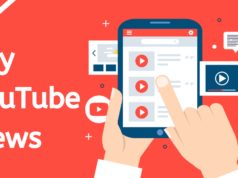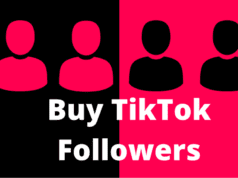
Landing pages act as a stepping stone between an action and a message. A landing page is a page on your website and is designed to convert potential customers into leads. A landing page is different from all the other pages on your website. In an SEO strategy, converting visitors into leads is critical in creating a stable relationship between your business and potential clients. As we have said, a landing page’s primary purpose is to convert potential visitors into leads. A landing page has a form that allows you to capture a visitor’s information. The information gained from a landing page is what helps you to create and score leads. With that in mind, this is what you should know about landing pages.
Creating a Landing Page: What You Need
You must ensure that you understand a few things before diving into creating and building a landing page. You will learn which technical solutions are there in this article and which one meets your needs better. Whether it’s Unbounce or Instapage, next, you need to understand marketing concepts like the buyer personas, offers, discounts, and finally, the buyer’s’ journey. After conducting market research to gain clear insights into your target customers’ behavior and preferences, and choosing a perfect platform for your landing page, you’ll be able to create the perfect content for a particular target audience
Less is better
You need to understand about landing pages because the fewer landing pages you have, the better. You don’t necessarily have to build a different landing page for every blog post that you create. Try to picture your landing pages as opportunities where visitors can find you, which will increase your chances of gaining leads. It’s better if you have excellent and well-performing landing pages that will rank well organically, rather than have many different pages that don’t rank and cannot lead to conversions. You should ensure that you have a unique landing page created for every marketing campaign you develop that is relatable to your offers.
Creative Headlines
A landing page needs to have a compelling headline that will immediately capture visitors’ attention and prompt them to continue reading. A catchy headline is what your visitors will want to see when they get to your landing page. Remember, the most crucial factor is to capture a visitor’s attention, so make sure you put in a lot of work when creating your headlines.
Clear Call to Action (CTA)
It’s common for many companies to place their call to action (CTA) above the fold. Although this may be the right solution, your CTA communicates to visitors what course of action you want them to take once they get to your landing page, so it must have its section. This step is vital because you might end up with conflicting CTAs or no CTA at all. You must ensure that your CTA is simple and straightforward. Many people using the internet today have a short attention span, so you must make it easier to find what they’re looking for. If they understand your CTA clearly, they are likely to convert and increase your conversions.
Avoid Including the Navigation Bar
You don’t need to include the top navigation menu on your landing page; this is not a landing page best practice. When you have the top navigation bar, you give your visitors time to explore other options, and they may end up clicking on more than one option other than the desired. The landing page should focus primarily on the offer you have and the next step as you have designed it. The takeaway here is that a landing page should not focus on your company’s website details.
Highlight the Benefits on the Landing Page
If a visitor gets to your landing page and starts scrolling, then that is a good sign, you’re doing everything right. Whether it was an ad or a headline that got them to your landing page, visitors who read your entire landing page are merely telling you that they are interested in what you have to offer. Many businesses don’t know how to talk about themselves or what they offer in a way that matters to potential clients. The most important thing to understand is that customers only care about what you have to offer and whether it will be beneficial to them, not the number of hours you have invested in building your landing page. So, make it worthwhile.
Add Social Proof on Your Landing Pages
A lot of people don’t trust marketing material. Why is this so? Well, every marketer speaks highly of the product they have on offer. While talking about a product is only one side of the coin, you also need to provide evidence of your landing page’s existence. You want to build a believable testimonial; so, ensure that you have reputable and verified sources, e.g., location, job title, etc. The best way to go about this is by relying on other high authority sources in your industry to put out the word about you. Also, having details of your name and physical business location means that a potential customer can track you down since the particulars are believable.
Ensure Your Landing Page Loads Faster
If you have an unresponsive landing page, then this turns away potential visitors. As we said earlier, many online users have a short attention span, and nobody wants to wait for an unresponsive page. They will automatically shift their attention to other content, which means you lose potential visitors and the potential for a conversion. Also, remember to curate your site for mobile users since everybody is on their smartphones nowadays.

A useful landing page should instinctively lead a user to conclude that converting is in their best interest. To do this, you need to know precisely what you want them to do and why they might never want to do it. Throughout your landing page, you should ensure to address their concerns and sell them the value of what they get in exchange for converting.








